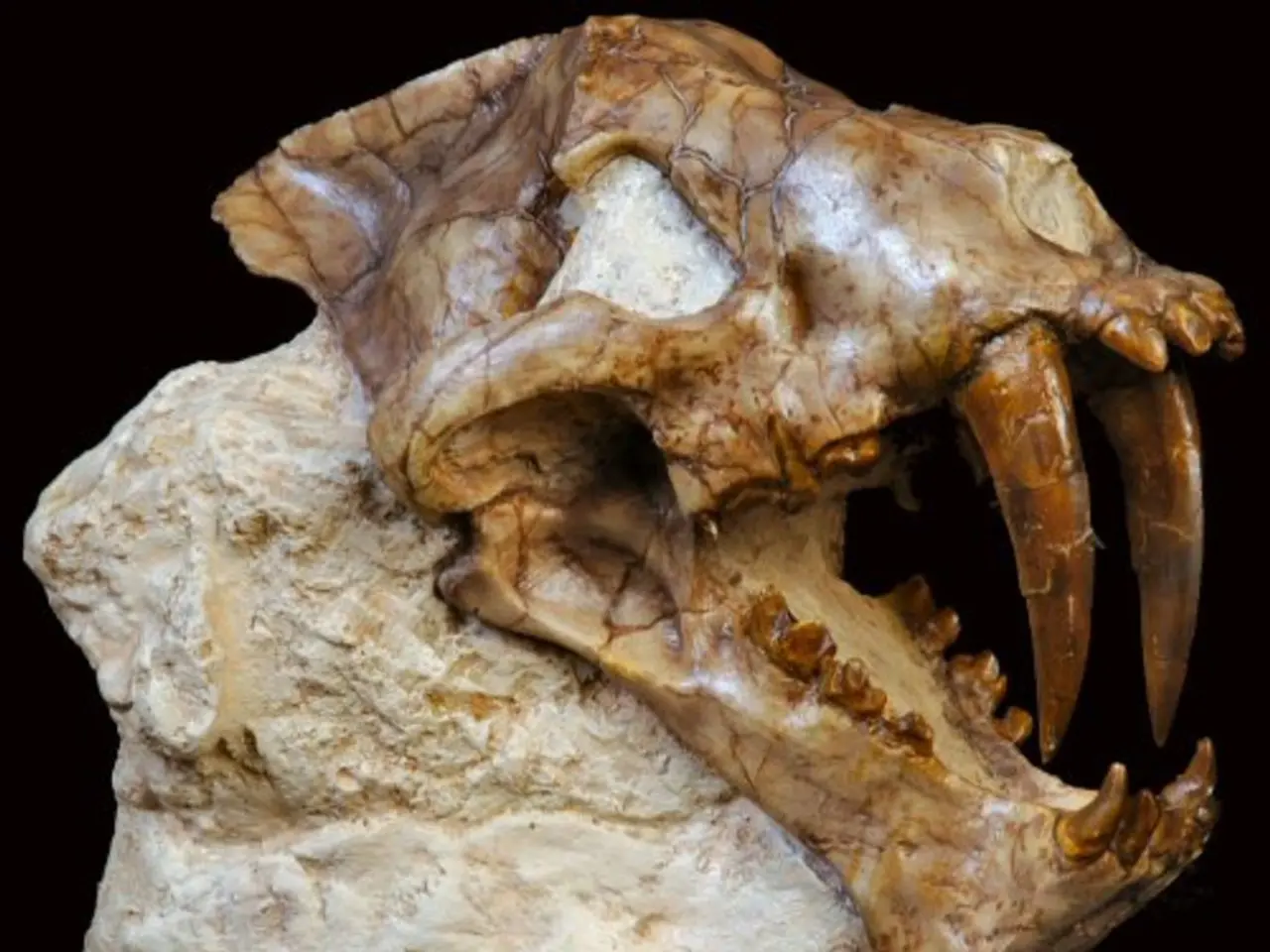Prehistoric shark discovered after millions of years in the depths of Earth's largest cavern
Mammoth Cave, located in the state of Kentucky, has been a treasure trove of ancient marine life discoveries. The National Park Service and the Smithsonian Paleobiology Department recently announced the discovery of three previously unknown species of ancient sharks in the cave system.
These newly discovered species, Troglocladodus trimblei, Glikmanius careforum, and Macadens olsoni, belonged to the extinct family of ctenacanths, known for their armored dorsal spines.
The species Macadens olsoni, a small shark with a unique spiral of crushing teeth, was found in the oldest layers of Mammoth Cave, dating back about 340 million years. This discovery significantly enriches our understanding of ancient shark diversity, ecology, and evolutionary adaptations.
Macadens olsoni had teeth formed in a curved whorl, perfectly suited for cracking open mollusks and worms. Its close relative, Troglocladodus trimblei, had forked, razor-sharp teeth, suggesting it targeted quick-moving fish and cephalopods. On the other hand, Glikmanius careforum had thick, blunt teeth, designed for crushing shellfish.
Mammoth Cave's geological history, with its rock formations originally laid down under a warm shallow sea and caves later carved out by underground water flow, acts as a natural archive preserving these fossils. The sediments in Mammoth Cave have preserved remains of ancient marine creatures, making it a valuable site for revealing life in ancient marine ecosystems.
The significance of the Mammoth Cave fossils lies in several key areas:
- Expanding Shark Diversity Knowledge: The discovery of Macadens olsoni adds to the more than 70 different ancient fish species identified in Mammoth Cave, illustrating a rich and previously underappreciated variety of ancient sharks that lived during the Mississippian period, about 320 to 360 million years ago. This enhances the fossil record by filling gaps in shark diversity during a critical period of evolutionary history.
- Unique Morphological Adaptations: The distinctive tooth whorl of Macadens olsoni—with rows of teeth arranged for crushing hard-shelled prey—reveals new evidence of specialized feeding mechanisms among early sharks. Such adaptations help paleontologists understand the ecological roles sharks played and how their teeth evolved to exploit different prey types.
- Preservation and Fossilization Context: Mammoth Cave’s unique geological history provides an ideal environment for preserving fossils. This highlights the importance of such fossil sites for revealing life in ancient marine ecosystems.
- Evolutionary Timeline Refinement: The discovery of partial shark skull remains and new species in the Mammoth Cave system pushes back the origin dates of some shark genera, refining the evolutionary timeline by as much as 50 million years in some cases.
In summary, Mammoth Cave’s fossil finds crucially expand our understanding of ancient marine life by adding new shark species with unique adaptations, demonstrating ancient biodiversity, and improving the evolutionary history timeline of sharks and related marine organisms. These discoveries underscore the broader value of paleontological research in caves for illuminating early vertebrate evolution.
References: [1] National Park Service. (n.d.). Mammoth Cave National Park. Retrieved from https://www.nps.gov/maca/index.htm [2] Smithsonian National Museum of Natural History. (n.d.). Fossils. Retrieved from https://naturalhistory.si.edu/research/research-areas/paleobiology/fossils [3] University of Chicago Press Journals. (2019). Newly discovered ancient sharks reveal secrets of prehistoric life. ScienceDaily. Retrieved March 18, 2023, from www.sciencedaily.com/releases/2019/02/190226124310.htm [4] University of Chicago Press Journals. (2016). The evolution of sharks and their relatives. Science. Retrieved March 18, 2023, from science.sciencemag.org/content/351/6275/aac0545
- The discovery of Macadens olsoni, a small shark with a unique spiral of crushing teeth, not only sheds light on ancient shark diversity but also highlights the significant role of environmental science, particularly paleontology, in understanding life in the ancient marine ecosystem.
- The advancements in technology, such as sophisticated imaging and analysis tools, have been instrumental in the recent discoveries of previously unknown species, like Macadens olsoni and other ancient marine creatures, in Mammoth Cave, demonstrating the importance of technology in environmental science and space-and-astronomy studies.




